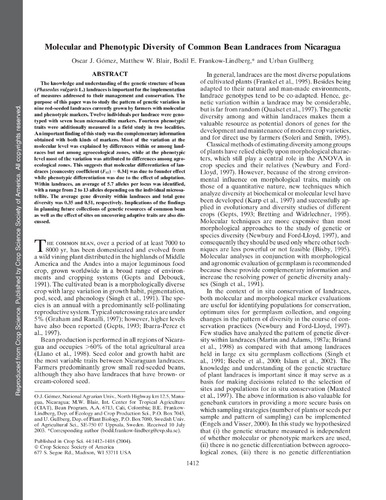Molecular and phenotypic diversity of common bean landraces from Nicaragua
The knowledge and understanding of the genetic structure of bean (Phaseolus vulgaris L.) landraces is important for the implementation of measures addressed to their management and conservation. The purpose of this paper was to study the pattern of genetic variation in nine red-seeded landraces currently grown by farmers with molecular and phenotypic markers. Twelve individuals per landrace were genotyped with seven bean microsatellite markers. Fourteen phenotypic traits were additionally measured in a field study in two localities. An important finding of this study was the complementary information obtained with both kinds of markers. Most of the variation at the molecular level was explained by differences within or among landraces but not among agroecological zones, while at the phenotypic level most of the variation was attributed to differences among agroecological zones. This suggests that molecular differentiation of landraces [coancestry coefficient (F ST) = 0.34] was due to founder effect while phenotypic differentiation was due to the effect of adaptation. Within landraces, an average of 5.7 alleles per locus was identified, with a range from 2 to 13 alleles depending on the individual microsatellite. The average gene diversity within landraces and total gene diversity was 0.35 and 0.51, respectively. Implications of the findings in planning future collections of genetic resources of common bean as well as the effect of sites on uncovering adaptive traits are also discussed.

